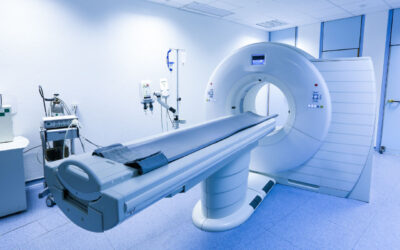
Nearly three years after the outbreak of the novel coronavirus (COVID-19) pandemic, the impact of global disruptions to the health care system are still being felt. Beyond large-scale considerations like staffing and logistical challenges, a number of lasting effects from the upheaval yet persist. However, alongside those considerations, so too does the resolve to confront them remain as well.
The kinds of changes that the pandemic imparted on the whole of the health care system have reverberated throughout various disciplines and sectors, from direct care to administration and staffing to equipment manufacturing and support. In developing solutions to the major considerations that remain, leaders are finding that some of their responses are improving upon processes that long had gone unconsidered, or are otherwise reinventing or refining systems for a post- (or late-stage) pandemic reality.
“The first thing I think we have learned is that customers in the very beginning needed help, and it was very clear that we are in this together,” said Murat Gungor, senior vice president of diagnostic imaging at Siemens Healthineers North America. “We realized we had to find a way to honor their requests for support because we’re partners, but it also made our customers strong partners with each other.”
What had begun as ways to drive efficiencies in response to tightening financial constraints became a lesson in risk diversification across the board, Gungor said. When supply chain issues presented a global challenge to various aspects of production, Siemens Healthineers found that its ability to source important components from a variety of suppliers across the planet yielded a resiliency that had gone unacknowledged previously. It also revealed the precariousness of potentially compromised elements of the production process from the customer perspective.
“The logistics-related pain shows itself in the continuum of the entire supply chain,” Gungor said. “It’s not just the front line of building a scanner because we’re missing a component; the pain continues until the last step. Creating an imaging suite, shielding it – all those steps have suffered, and they’re still not back to normal, although they are on the right track. Sometimes, customers could not find the resources to provide needed services, such as contractors or riggers.”
“The lesson learned is that we need to think about the entire supply chain process so we can do those things for the customers,” he said. “We try to do more than we’re used to doing to help ensure that health care delivery doesn’t suffer.”
Similarly, Gungor said that the Great Resignation – the large-scale exodus of people from their longtime professions across all employment sectors – “pushed us to build different muscles in our organization that we didn’t even know existed.” In response, Siemens Healthineers worked to bolster its imaging workforce applications and sourcing talent that could be schooled through a dedicated program to certify staff via the American College of Radiology (ACR). By leaning into its customers’ needs for skilled employees, Siemens Healthineers began to create on-demand teams that emerged as a flexible tech resource to help its customers extend and fill those gaps. It ended up being a successful business model. The viability of that model has proven itself to be sustainable even beyond its initial stopgap applications, Gungor said.
“When some of our customers acquire an MR scanner or two, they also want to have the resources to manage them, and we provide those services now,” he said. “On the industry side, our role isn’t only building the box and installing the box, now it’s beyond into helping people run it and maintain it. The scope across medical imaging has grown over the last few years, and our organization is aligning to it.”
From front-line salespeople to the post-sales support, Gungor said the institutional approach at Siemens Healthineers has shifted to one of partnership married with enterprise solutions and after-sales support. To facilitate that enterprise, the business retained consultants to evaluate its operations, and ended up discovering customers truly needed technicians and support staff on the back end of their purchases rather than installation and planning services up front.
“Getting into the services business definitely has been an interesting experience,” Gungor said. “Based on this, in the last two and a half years or so, we have signed many large partnerships, changing our identity in the market space. What was interesting was the prioritization: with all these troubles coming into the pandemic, people completely changed the way they look at their business.”
That top-down evaluative perspective led to clients reconsidering their patients’ direct experiences, from interactions with scheduling staff, to those in admissions and administration, to clinicians and after-care navigation. What also became clear in the wake of those calculations was that patients don’t need to meet their caregivers in person anymore, nor do they always need to travel to urban areas for care thanks to the rise of more rural facilities
“You have to have the flexibility to offer customers solutions that address these emerging trends,” Gungor said. “You need to have a really diversified services offering that’s available regardless of the location of care delivery.”
Sharon Mohammed, assistant director of technical education at the Bellevue Hospital Center School of Radiologic Technology in New York, New York, said that the notion of manufacturers diversifying their services offerings to better facilitate the needs of their customers also applies to changes in institutional perspectives around connecting with patients undergoing medical imaging services. In order to make up for patient volumes that were lost amid compulsory shutdowns during the heights of the pandemic, Mohammed suggested that radiology departments “want to supercharge everything to make connections and to quickly build trust again.”
“Right now, we have to create a loyalty to our brand,” she said. “People were afraid to come to the doctor, or afraid to come to the hospital [during the pandemic]. It has to be a retail-inspired relationship that we build. We need to understand the top drivers, the physician roles, and couple outreach with a personal touch.”
Part of rebuilding that customer connection involves improving and expanding patient safety measures, from basic cleaning and decontamination to ambulatory imaging made safer by social distancing measures. Shortening scanning protocols and decreasing the number of staff members who come into contact with patients not only limits exposure to infection risks, but supports optimization efficiency.
Beyond those safety and throughput improvements, Mohammed believes that patient relationships are also strengthened by adding personal touches to the mechanisms of digital outreach that also supplement in-person interactions. Instead of simply communicating findings through typewritten reports, patients can now receive video reports created by their radiologists that emphasize the visibility of the clinician while also delivering a personalized summary of their results. Such endeavors go towards “repairing that human connection that was lost” during the pandemic, she said.
“It’s a whole different landscape now,” Mohammed said. “We need data capabilities to track patient engagement and feedback. All incentives have to align with a patient-centric mindset, because that’s going to help them thrive in the future. All of those are partnerships with communication channels. Technologists and radiologists have to be engaged in that.”
But much like employers across every segment of the economy, medical imaging professionals have been no less deeply affected by staffing concerns that arose during the Great Resignation. Among the unanticipated consequences of that shortfall in personnel has been the emergence of what Mohammed described as “huge generational gaps in the workforce.” With some of the best professionals in the game poached by staffing companies and often assigned to temporary contracts scattered across a variety of institutions, recruitment and retention policies from tuition reimbursement to cash incentivization of long-term workers have become relied upon more broadly to keep professionals on the job.
“What is hurting us right now are these travel companies,” Mohammed said. “People don’t really have to commit to an institution. They’re being offered really high wages for 13 weeks, and then they can be on their way. New talent can simply jump on that. The whole landscape of health care has changed. We no longer have people working for 20 years in one place.”
As employers seek out ways to train and retain staff for the long term, Mohammed said they’re considering a variety of options, be they technologically based, or benefits based. She believes that flexible training and scheduling policies, such as technical night schools, which don’t currently exist for medical imaging careers, could be a strategy that might help develop new talent pipelines. But even once personnel are hired, employers need to work to facilitate workplaces that alleviate stress and burnout, offer general recognition of effort, and devise benefits and incentives that are tailored to younger workers, be they tuition forgiveness, flexible scheduling, remote work opportunities, and the like.
“Hospital workplaces usually cater to mid-career or baby boomer workforce, but now they need to cater to younger workers,” Mohammed said. “It’s going to get worse because the population is aging and baby boomers are retiring, and there’s a need for care for more of these populations, which means more staff. I don’t think anyone’s really figured out the solutions. I’d like to acknowledge our students at Bellevue Hospital Center School of Radiologic Technology for their dedication to providing high-quality patient care in a respectful and responsive way. They have demonstrated resilience, determination and commitment required to achieve results.”
Bradley Spieler, vice chair of scholarly activity and research and professor of clinical radiology at the LSU Health School of Medicine, echoed Mohammed’s remarks on the value of creating a workplace that caters to younger professionals, specifically in a hybrid format that offers onsite and remote workflow opportunities. Spieler said he’s found those benefits to be particularly self-evident, particularly in an academic setting.
“I think people are realizing post-pandemic that this is a better way to do things,” he said. “We’re seeing that it allows for more time for teaching. People are getting less burned out because you’re able to do a lot of things now that you can do virtually.”
The utility of the hybrid, real-time, and virtual format also extends to meetings and interdisciplinary conferences. In the academic setting, it makes it easier to add granularity to tumor boards that require radiology and pathology experts to be present. It’s also supported teleradiology positions and remote work opportunities, which are particularly necessary for responsibilities that pivot among in-person and in-hospital environments.
“It’s been a huge benefit that everybody’s on board with us using Zoom and not necessarily having to run from hospital to hospital and building to building,” Spieler said. “In terms of the virtual format, people are now more comfortable.”
That same comfort has been extended to employers in offering flexible work schedules that cater to the individual needs of employees. In a particularly competitive hiring environment, workplace environment benefits help employers stand out to prospective staffers who might have their choice of places to land.
“I can’t tell you how many technologists have gone to part-time because they saw the benefit rather than the hindrance of it over the pandemic,” Spieler said. “We’re seeing more and more people wanting to go to that part-time format, and maybe stringing together a couple of different places rather than being in one place for the next 30 years.”
In academic institutions, the ability to go remote also supports the virtualization of things like the admissions process, helping promote inclusivity by supporting students and residents who would otherwise be limited by travel demands and the expenses of interviewing in person. For Spieler, it underscored his own financial considerations at the time of his college search, which included taking out extra loans to travel to interviews across the United States.
“I think the level of additional comfort that people have with that virtual format is something that will carry forward,” he said.
Finally, one of the most seemingly elementary lasting cultural shifts that Spieler counts as being incorporated into routine practice since the pandemic is the one that has been the hardest to promote among the general populace: that of mask-wearing when sick and around patients. In a season where hospitals are being overwhelmed by not only COVID but influenza and RSV, the value of being masked “has heightened our thoughtfulness in patient care and being sanitary because we’ve seen what’s happened.”
“For me that’s a plus,” Spieler said. “There’s more self-awareness, and I think it’s increased our mindfulness.”









